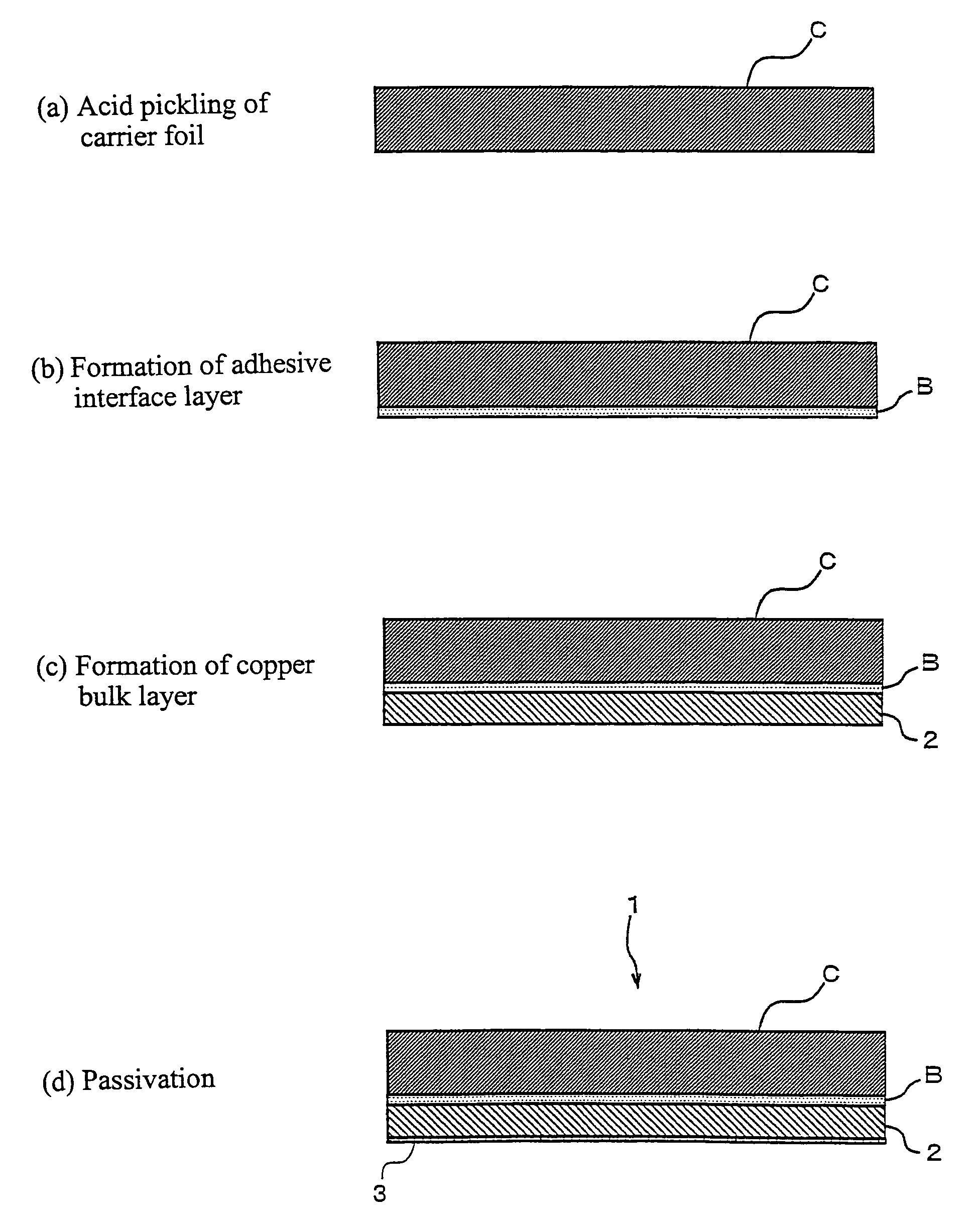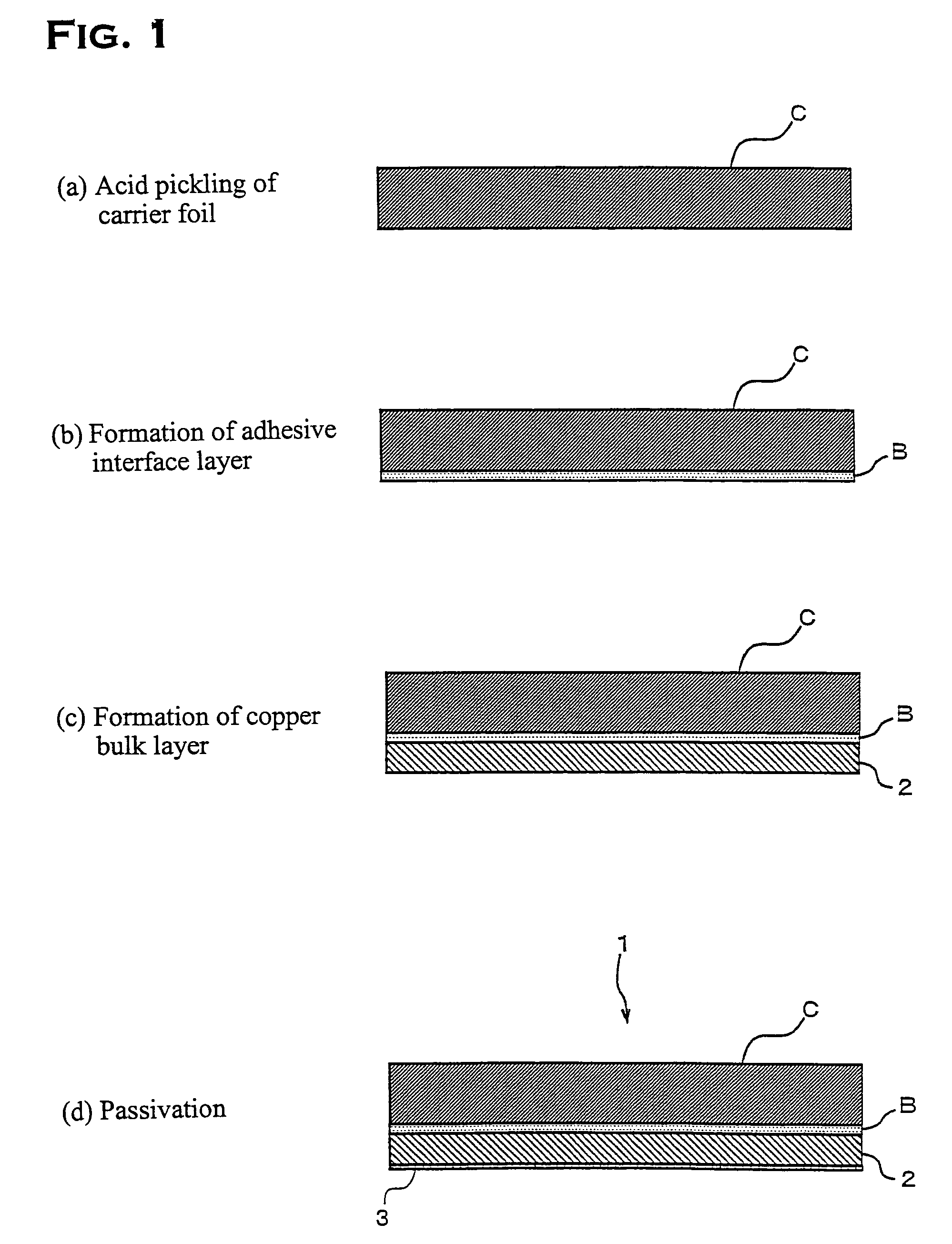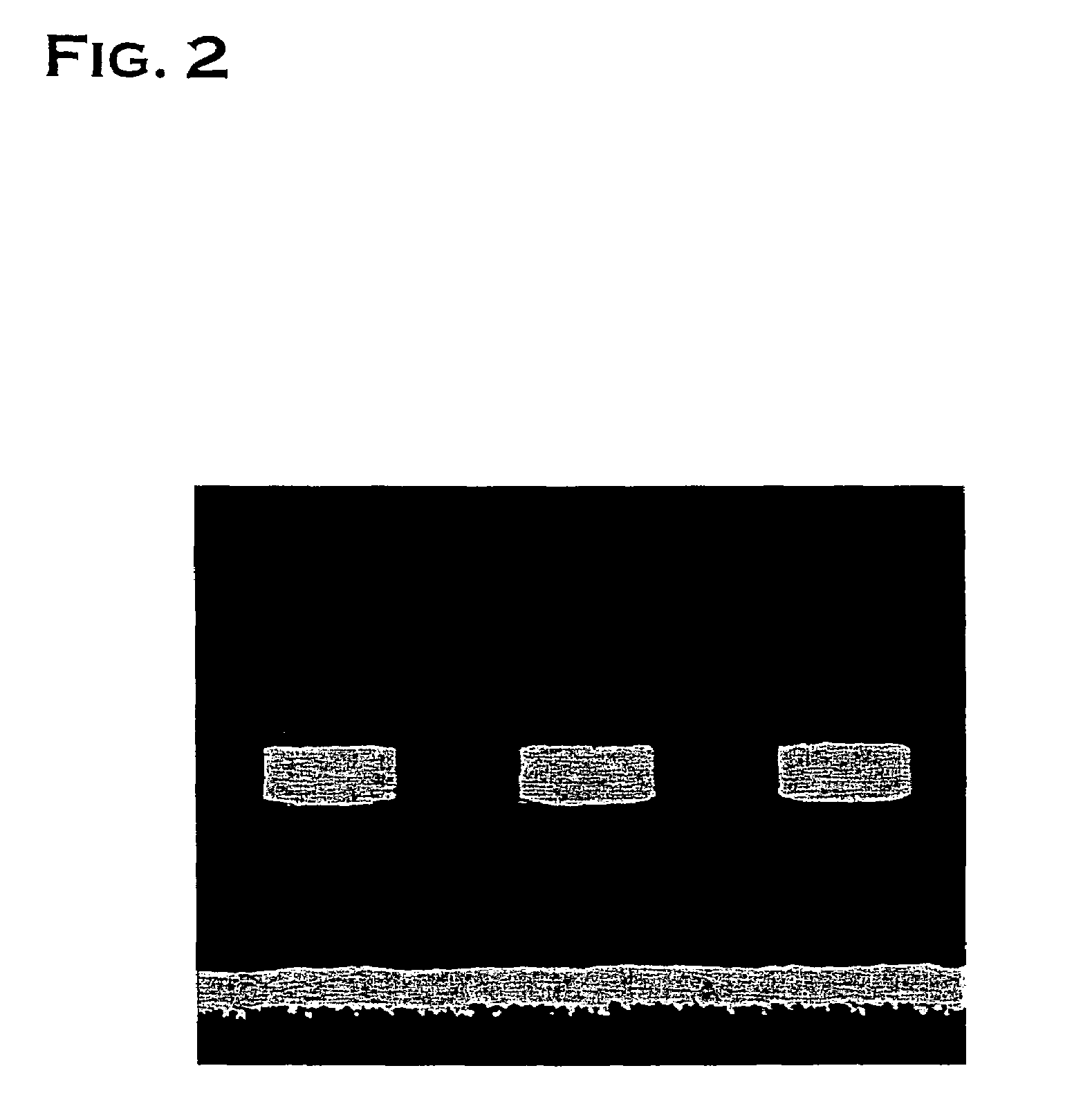Electrodeposited copper foil with carrier foil
a carrier foil and copper foil technology, applied in the direction of insulating substrate metal adhesion improvement, transportation and packaging, other domestic articles, etc., can solve the problems of affecting the adhesion migration might occur, and the fine copper particles b>4/b> might constitute an obstacle, so as to improve the adhesion strength, and improve the adhesion. the effect of the insulating layer
- Summary
- Abstract
- Description
- Claims
- Application Information
AI Technical Summary
Benefits of technology
Problems solved by technology
Method used
Image
Examples
first embodiment
[0027]In this embodiment, electrodeposited copper foil 1 with a carrier foil related to the invention was fabricated by following the procedure shown in FIG. 1. First, in the step shown in (a) of FIG. 1, 18 μm thick copper foil was used as carrier foil C and the surface of the carrier foil C was acid pickled, whereby adhering oil and fat components were completely removed and an excessive surface oxide film was removed. This acid pickling was performed in a dilute sulfuric acid solution having a concentration of 100 g / L and a solution temperature of 30° C. for an immersion time of 30 seconds.
[0028]The carrier foil C for which acid pickling had been completed was immersed for 30 seconds in an aqueous solution of pH 5, which contains CBTA in a concentration of 5 g / L, at a solution temperature of 40° C. and an adhesive interface layer B was formed on the surface as shown in (b) of FIG. 1. Strictly speaking, when such an immersion process as described above is adopted, the adhesive inte...
second embodiment
[0037]Next, for the passivation of the bonded surface of electrodeposited copper foil with a carrier foil, a description will be given of results of an investigation of adhesive properties when the coating weight of zinc and nickel and their composition ratio are varied.
[0038]The electrodeposited copper foil with a carrier foil used in this second embodiment was obtained by a manufacturing method similar to that adopted in the first embodiment, and by controlling the nickel and zinc concentrations, current density, etc., during the nickel-zinc alloy plating treatment, passivated layers having different coating weights and composition ratios of nickel and zinc were obtained. The chromate treatment and the silane coupling agent treatment were the same as with the first embodiment.
[0039]Electrodeposited copper foil with carrier foil in which the coating weights and component ratios of nickel and zinc in the nickel-zinc alloy plating treatment as shown in Table 3 was produced and as wit...
PUM
| Property | Measurement | Unit |
|---|---|---|
| thick | aaaaa | aaaaa |
| diameter | aaaaa | aaaaa |
| thickness | aaaaa | aaaaa |
Abstract
Description
Claims
Application Information
 Login to View More
Login to View More - R&D
- Intellectual Property
- Life Sciences
- Materials
- Tech Scout
- Unparalleled Data Quality
- Higher Quality Content
- 60% Fewer Hallucinations
Browse by: Latest US Patents, China's latest patents, Technical Efficacy Thesaurus, Application Domain, Technology Topic, Popular Technical Reports.
© 2025 PatSnap. All rights reserved.Legal|Privacy policy|Modern Slavery Act Transparency Statement|Sitemap|About US| Contact US: help@patsnap.com



